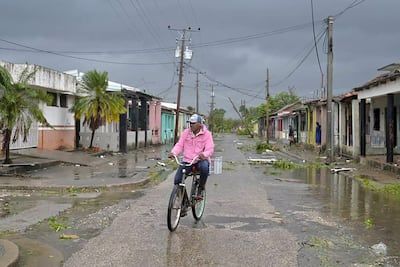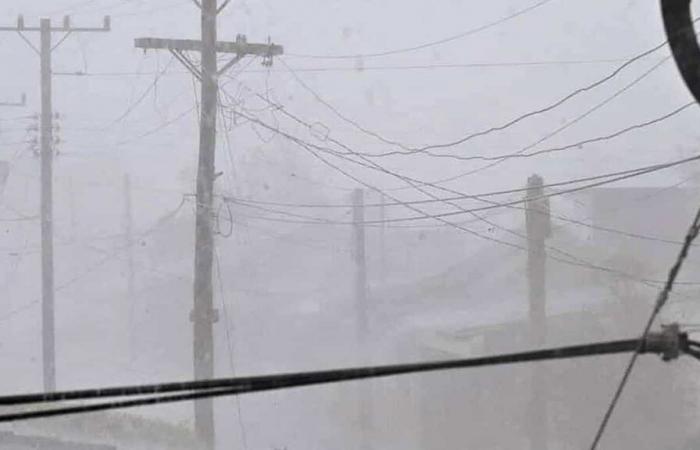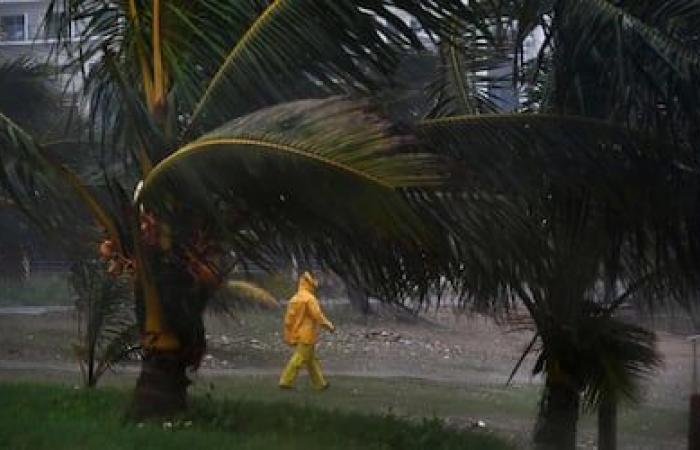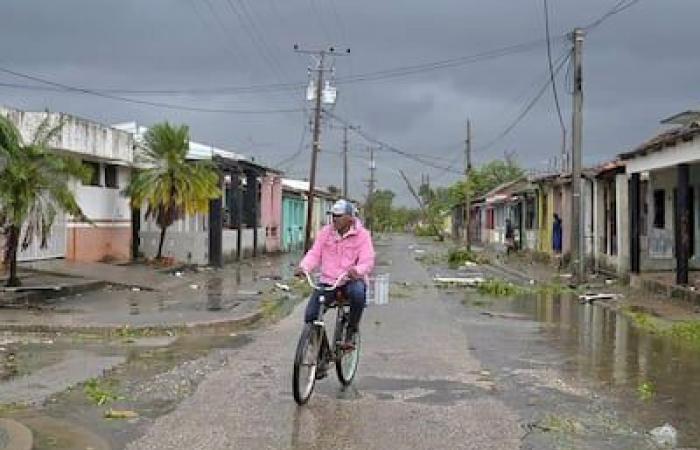Cuba is once again plunged into darkness due to the collapse of its electricity system caused by the winds of Hurricane “Rafael” gusting to more than 185 km/h.
• Also read: Hurricane Rafael strengthens to category 3 as it approaches Cuba
«Rafael made landfall in the Cuban province of Artemisa,” west of Havana, “with sustained winds of nearly 185 km/h,” said the National Hurricane Center (NHC), based in the United States. , in its bulletin published at 4:15 p.m.
According to images shot by AFP journalists in Publo Candelaria, a town of 20,000 inhabitants 65 km west of Havana, the deserted streets are swept by strong gusty winds accompanied by rain, which have uprooted branches of trees, whose tops are swayed in all directions.
A little earlier, the “strong winds caused by the hurricane Rafael high intensity caused the disconnection of the national electricity system,” the national electricity company indicated on X.
Cuba and its ten million inhabitants were already affected two weeks ago by a giant power outage lasting four days and by the passage of the hurricane Oscarwhich caused the death of eight people.
Photo AFP
The NHC warned of the risk of “potentially fatal submergences, destructive winds […] and flash floods” in this area of the country.

Photo AFP
“Severe hurricane with maximum sustained winds of 185 km/h”, which makes it a category 3 out of 5 hurricane according to the Saffir-Simpson scale, added the Cuban Meteorological Institute to X.
In Havana, where two million inhabitants live, the deserted streets were swept by strong gusts accompanied by intense rain, AFP noted. Shops, offices and schools had been closed in advance.
«Rafael moves northwest at a speed of 20 km/h […] and should cross Cuba this evening and emerge over the southeast of the Gulf of Mexico in the evening or the weekend,” it is added.
A tropical storm warning has been issued for the Florida Keys.
«Courage, Cuba»
The Cuban authorities had increased calls for vigilance and preventive measures “to protect the population and safeguard material resources”.

Photo AFP
“We are in constant communication with the territories that will most feel the effects of the hurricane Rafael“, Cuban President Miguel Diaz-Canel declared on Wednesday on X. “Courage Cuba!” he said.
Nine provinces (out of the country’s fifteen), located in the west and center of the island, including that of Havana, have been placed on “cyclonic alert”.
Furthermore, the National Defense Council, made up of soldiers, was activated on Tuesday to respond to the meteorological emergency.

Photo AFP
Shelter operations were carried out in various provinces of the country involving several tens of thousands of Cubans, particularly in the west and center of the country.
Around 13,000 people were notably placed under protection in the central province of Villa Clara, according to the official press, which however specified that the alert had been lifted in the province of Guantanamo (east), the hardest hit by the hurricane Oscar.

Photo AFP
The latter, category 1, hit the east of the island on October 20 before transforming into a tropical storm. Severe flooding surprised residents of two locations in Guantanamo, San Antonio del Sur and Imias, where eight people died.
Oscar occurred while the island was suffering from a general blackout. For four days, the island was without power due to a giant blackout which broke out on October 18 following fuel shortages and a breakdown at the country’s main power station.
The availability of electricity “will depend a lot on the effects of the hurricane,” Lazaro Guerra, director of electricity at the Ministry of Energy and Mines, warned on Cuban television.
Last week, the Minister of Energy and Mines, Vicente de la O Levy, acknowledged that the situation in the electricity system remained “tense”, with load shedding continuing chronically.
In September 2022, the island had already experienced a widespread power outage after the passage of the powerful hurricane Ianwhich had struck the west of the island.








